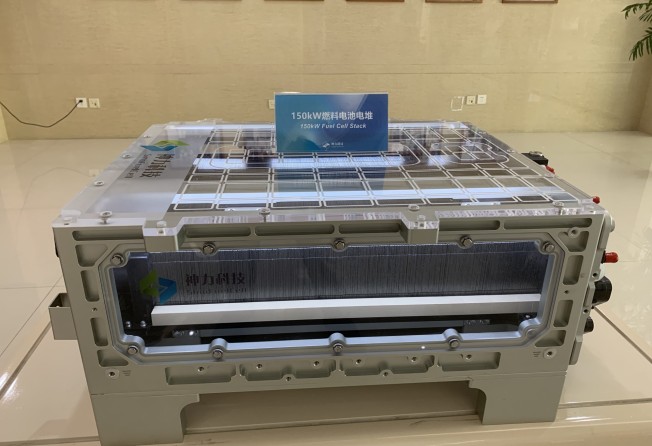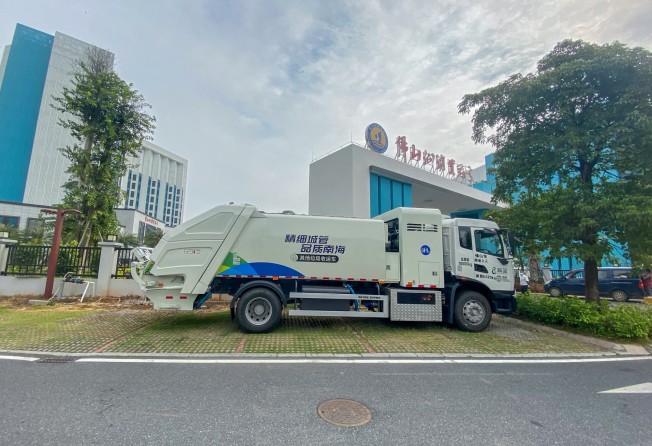
China’s largest fuel-cell producer Sinofuelcell expects sales to double as government promotes hydrogen-powered vehicles
- At least 2,500 vehicles using the company’s fuel cells will hit the road in 2023, company president says
- China has said it aims to have 1 million hydrogen-powered cars on its roads by 2030, served by 1,000 refuelling stations

Shanghai Sinofuelcell, mainland China’s largest producer of hydrogen fuel cells for vehicles, forecasts that its sales will more than double this year as Beijing promotes the technology as part of its pursuit of carbon neutrality by 2060.
Dai Wei, president of the company, told the Post on Thursday that at least 2,500 new hydrogen-powered vehicles will take to mainland China’s roads in 2023 using fuel cells produced by Sinofuelcell.
The number will represent a big jump from last year’s 1,200 units, or about one-fourth of the total sales in China, where 5,000 hydrogen fuel-cell vehicles were put into service.
“Support by national authorities created favourable market conditions for us,” Dai said. “Our ultimate goal is to make passenger fuel-cell cars affordable to every household.”

The company’s production capacity will expand to 10,000 units in 2024, from 5,000 units this year, Dai said.
China has said it aims to have 1 million hydrogen-powered cars on its roads by 2030, served by 1,000 refuelling stations, according to a road map published in 2016 by an advisory committee of the Society of Automotive Engineers of China.
The sector remains largely untapped, however, because of high costs, limited driving range and a lack of refuelling stations. Companies that use such vehicles rely heavily on generous government subsidies – 240,000 yuan (US$33,947) for every hydrogen-powered car and up to 400,000 yuan for trucks.
Fuel-cell cars are propelled by electric motors, with hydrogen gas passing through a stack of plastic membranes and platinum-dusted plates to produce electricity.
“When the production and sales volume go up, fuel-cell cars can eventually be built with lower costs than electric cars,” Dai said. “But another concern lies in infrastructure. Thousands of hydrogen refuelling stations need to be set up to support a growing number of fuel-cell vehicles.”
Pure-electric, plug-in-hybrid and fuel-cell cars are all categorised as new-energy vehicles (NEVs) in China, the world’s largest automotive and electric-car market.

The country reported 6.5 million NEV sales in 2022, up 96 per cent on year. But the 5,000 hydrogen-powered vehicles represented just 0.07 per cent of total NEV deliveries.
“Government incentives, such as stronger subsidies and massive efforts to expand the refuelling network can be game changers,” said Yin Ran, an angel investor in Shanghai. “Wide use of fuel-cell vehicles by companies and individuals can be expected in the coming decade, but obviously, battery-powered vehicles will still dominate the NEV sector.”
Shanghai plans to have 10,000 hydrogen-powered cars on its roads this year, and has pledged to invest heavily in alternative energy sources. The mainland’s financial and commercial hub also planned to build 100 hydrogen refuelling stations this year, according to the Shanghai Commission of Economy and Information Technology.
The city had 1,200 fuel-cell vehicles on its roads, at the end of 2020, with nine refuelling stations in service. Meanwhile, Beijing announced in 2021 that it would have 10,000 such vehicles before 2025.
At present, almost all of the hydrogen-powered vehicles on China’s roads are retrofitted commercial trucks, according to new energy consultancy qingyunlian.com.